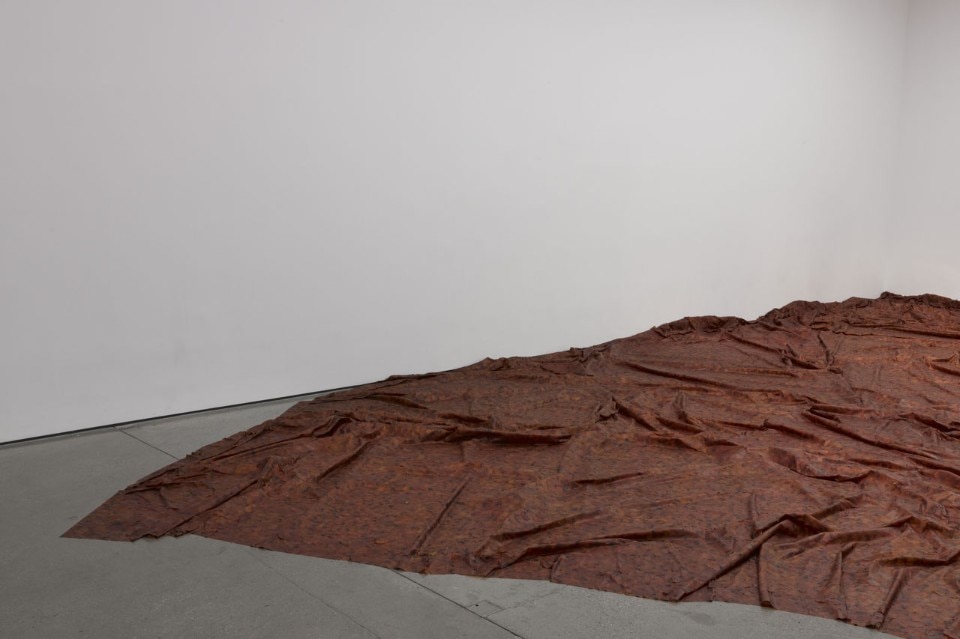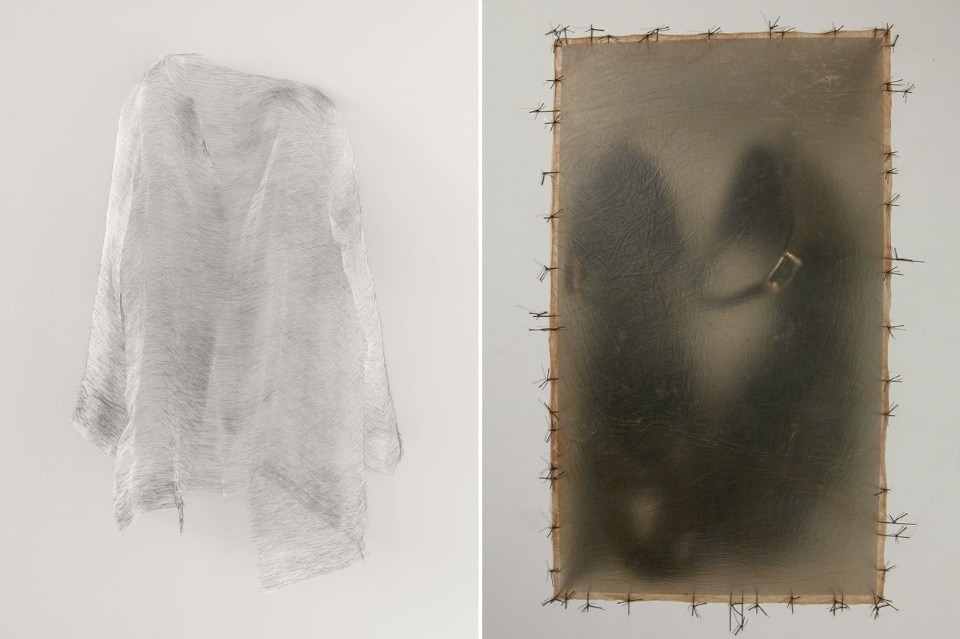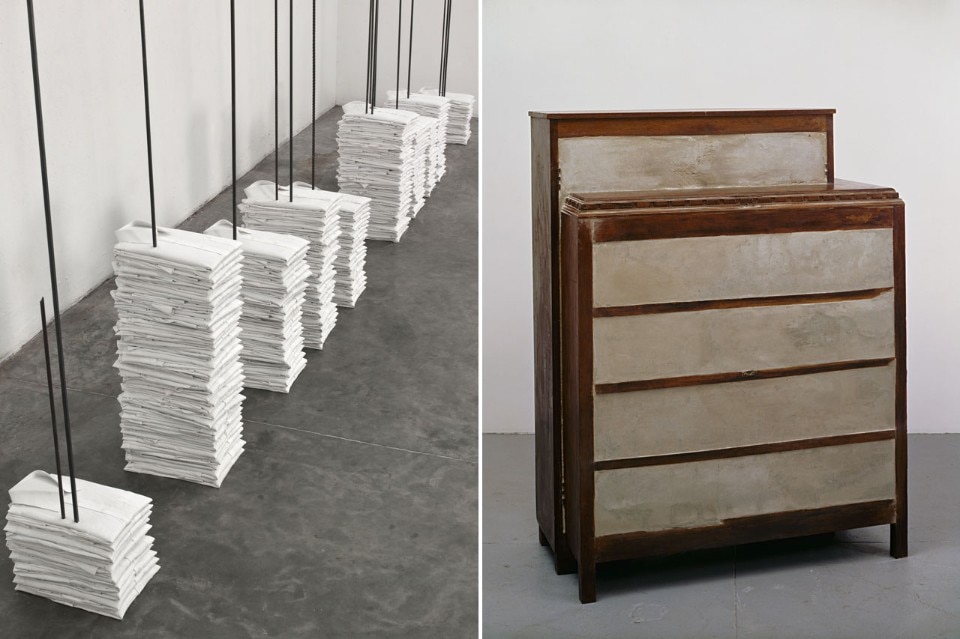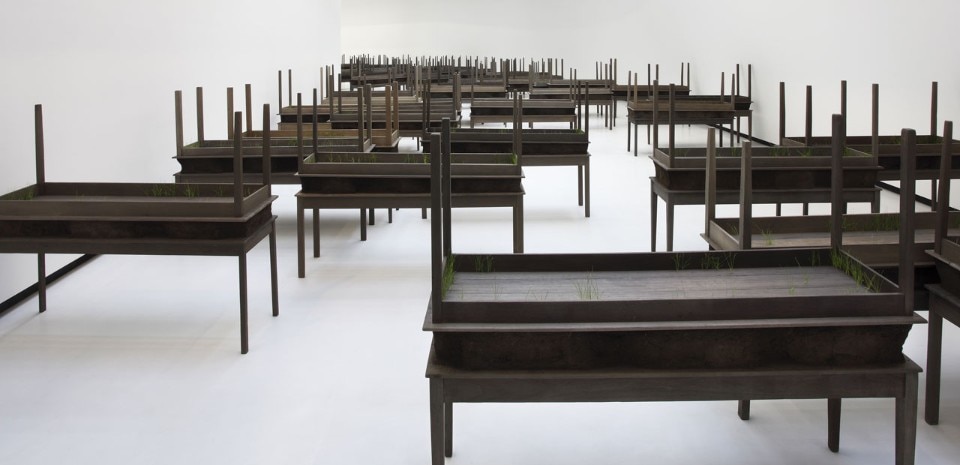Over the past three decades, Salcedo has created sculptures and installations that address the traumatic history of modern-day Colombia, as well as wider legacies of suffering stemming from colonialism, racism, and other forms of social injustice across the world. Installed within all four of the Tower Levels of the museum, the exhibition occupies approximately half of the Guggenheim’s gallery space and features the artist’s significant bodies of work from the late 1980s to the present.

From the outset of her career, Salcedo has employed the strategy of transmuting common domestic objects into vessels freighted with memories and submerged narratives. The earliest works featured in the exhibition incorporate hospital furniture that has been altered by the presence of animal fiber and plastic doll parts. The skeletal frames of hospital cots also are used in the installation Untitled (1989– 90/2013), in this case arrayed in bleak formation with eleven stacks of crisply laundered white shirts. The shirts, which might otherwise evoke the comforting harmony of a well-run home, are impaled by steel rebar in an image of violent incursion. These sculptures are, in part, oblique responses to tragic situations in Colombia, but their embodiment of the experience of irreparable loss achieves universal resonance.
Her seminal work Atrabiliarios (1992–2004) creates a chapel-like environment in which a series of wall niches enshrine worn shoes. Covered with pieces of semitranslucent animal fiber sutured to the wall with large, uneven stitches, the shoes are only partially visible, giving them the hazy remove of a fugitive memory. In one of the galleries the artist will configure sculptures from her celebrated body of work dating from 1989–2008, comprised of pieces of domestic furniture that have been suffused with concrete, as if muted and immobilized by the weight of grief. Other series that conjure the complex operation of mourning and memory include La Casa Viuda (1993–95), in which the artist combined disjunctive architectural elements with scraps of fabric and fragments of bone, and Unland (1995–98), in which mismatched tables are forced together, their surfaces populated with an intricate mesh of thread and human hair.

The exhibition also features two of Salcedo’s most recent major installations, both of which draw on overtly funereal symbolism yet propose a sense of magic in the apparent impossibility of their materials. In Plegaria Muda (2008–10), viewers are surrounded by a labyrinthine arrangement of units formed from pairs of tables, one inverted on top of the other, through which blades of real grass improbably sprout.
The tables approximate the size of human bodies, and together they recall a mass grave, their verdant surfaces suggestive of nature’s power to both heal and erase. A Flor de Piel (2012) is an enormous shroud created in homage to a nurse who was tortured and murdered in Colombia. Its undulating fabric is painstakingly stitched together from chemically preserved rose petals – a material replete with romantic associations that at the same time mimics the appearance of flayed skin. A similar dichotomy between horror and fragile beauty charges Salcedo’s most recent series, Disremembered (2014). Woven from innumerable strands of silk thread and burnt needles, these works take the form of garments that would harm rather than comfort or protect the wearer.
Following its New York presentation, the exhibition will travel to the Pérez Art Museum Miami in 2016.

June 26–October 12, 2015
Doris Salcedo
curated by Madeleine Grynsztejn and Julie Rodrigues Widholm
with support from Steven L. Bridges
organized by the Museum of Contemporary Art Chicago
Solomon R. Guggenheim presentation curated by Katherine Brinson with support from Susan Thompson
Solomon R. Guggenheim Museum
1071 Fifth Avenue, New York


